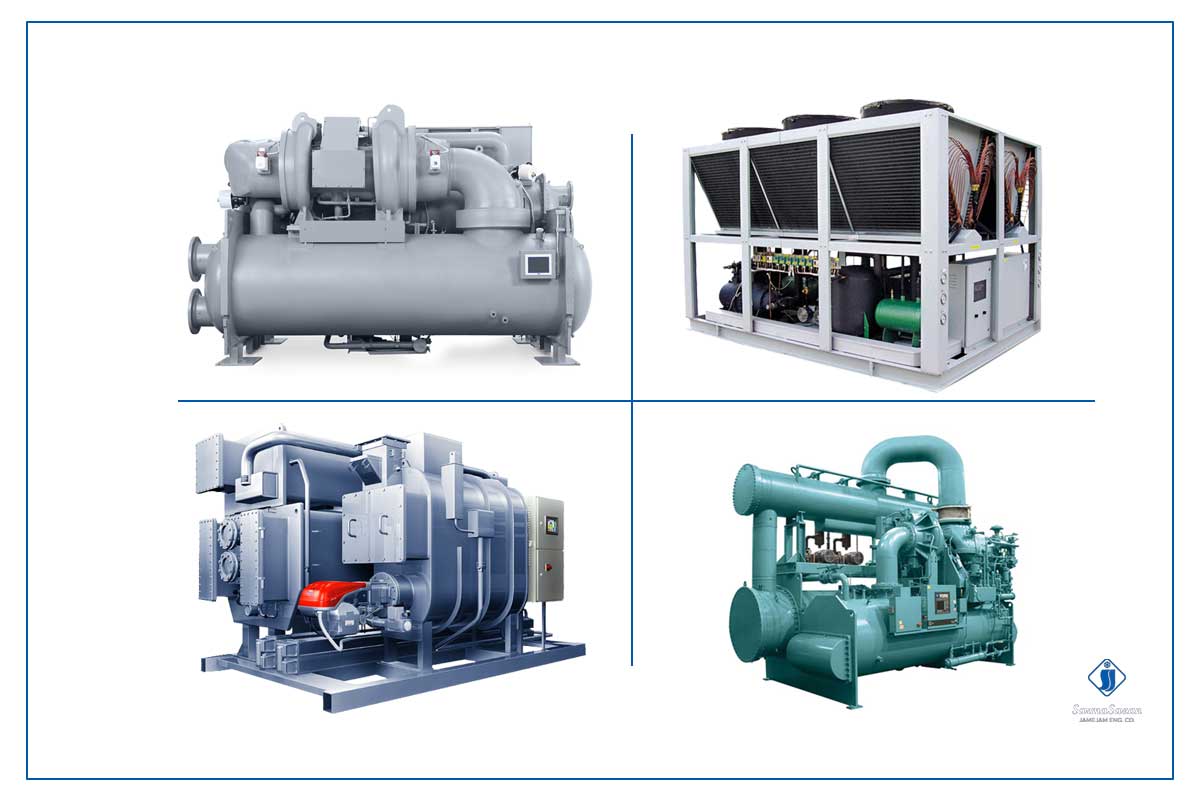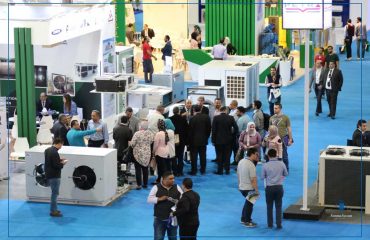What is a chiller?
Before choosing any device; General acquaintance with it and knowing its way and tradition is not without grace; Because it helps to make better choices and achieve greater adaptation to needs. Especially a device such as a chiller, which costs a lot, is designed to be busy for a long time and replace it in the long run; It does not make sense except in cases of breakdown.
Chiller is one of the air conditioners whose scope of tasks includes air conditioning, temperature regulation, air disinfection and humidity regulation. With the help of thermodynamic laws, the chiller achieves its main goal of dissipating heat and facilitating heat transfer to another environment. To understand the mechanism of the chiller, we must first know that this device is not a means of generating cold, but a means of dissipating heat.
Chiller selection based on the types of chillers available in the market
There are different chillers according to different criteria. If we want to briefly describe the criteria for classifying chillers, we come to the following:
- Cycle and general mechanism of chiller
- Compressor shape
- Condenser operation
Types of chillers in terms of the cycle and general mechanism of chiller
Compression chillers and absorption chillers are categories that are defined from this perspective. The main function of compression chillers is on the steam compression shaft, so there is a compressor in the construction of these chillers. While absorption chillers use an absorber or absorber for their cycle and a set of three-digit equipment including generator, pump and absorber replace the compressor in this chiller. Therefore, absorption chillers do not have a compressor inside.
One of the most common adsorbents in absorption chillers is lithium bromide, which after years of testing and research, is considered to be the best adsorbent for this work, which is less polluting to the environment but still polluting. Therefore, people who have environmental concerns can choose another type of chiller.
Another difference between compression chillers and absorption chillers is their energy consumption. Compression chillers use electronic energy, while absorption chillers run on fossil fuels, gas or thermal energy. Therefore, places with geographical conditions, especially those that do not have access to a large source of electronic energy, can use absorption chillers.
Classification of the chiller in terms of condenser performance
Condenser performance is the factor that makes two types of cold water and cool air for chillers. This means that the chiller uses water or air to dissipate heat and cool its condenser.
If the chiller uses air to cool its condenser, it takes the name of cool air chiller. Because of the high volume of heat dissipated from the cool air chiller, this unwanted heat dissipation is usually used positively in another process. For example, industrial activities or residential buildings can provide some of the heat they need to perform any process or generate heat from the same heat dissipated by the condenser.
So far we have found that the condenser uses air to cool itself. In fact, it transfers its heat to the open air around it. Due to this way of working, it is necessary to install cool air chillers in large open spaces or at least with a suitable area. Also, the presence of a fan in this type of chillers can be somewhat annoying noise pollution. Therefore, it is necessary to be very careful at the point of installation according to the use of the building in which the chiller is to be installed.
In contrast, condensers of cold water chillers transfer their heat to water, which is why they are called cold water chillers. In this way, a cooling tower is installed in the condenser and draws the heated water into it and returns it to the condenser in a cooled form. In this way, another cycle is added in addition to the two that already existed: the cycle between the cooling tower and the chiller condenser.
Due to the need for a cooling tower, buyers of cold water chillers need to consider the space required for the cooling tower. Also, the presence of an additional element in the system increases both the cost of purchase and the effort and cost of maintenance and service. However, cold water chillers are among the most common and popular chillers on the market.
Selection of different types of chillers in terms of compressor shape
As mentioned before, compressors are only available in compression chillers. So when we talk about different types of compressors – for example, scroll – we mean a compression chiller with a scroll or screw compressor.
The shape and structure of the chiller compressor, which fall into four groups, each condenses the refrigerant in some way.
- Scral or helical
- A piston with other names for reciprocating or impact
- Centrifugal or centrifugal chiller
- Screw or spiral

 English
English  فارسی
فارسی 



